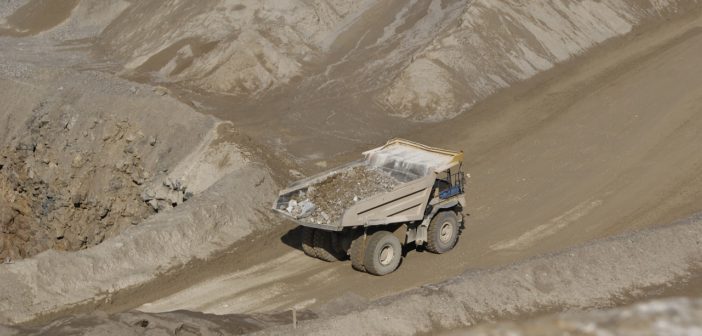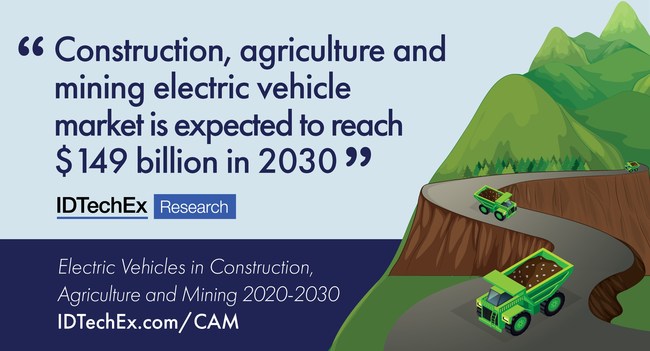See the power of a rock avalanche. It is a reminder of potential energy. In Switzerland monster trucks carry ore down from mountainside quarries, the regenerative braking creating almost enough energy to get the empty truck back up again. In an open-pit mine of the future, monster trucks carrying ore round and up the sides could be battery-electric: the trucks go down empty, but 30 minutes of regenerative braking saves tens of kWh of electricity that would otherwise be needed at a charging station, reducing truck availability.
The latest forestry example is carrying trees down from the mountains of Canada. Tesla Semi electric trucks are going to power a log-hauling pilot program in Canada that is aspiring to be the first zero-emission log trucking operation. Mosaic Forest Management, a timberlands management company based on Vancouver Island, explains the need to electrify logging operations.
The British Columbia forest sector already plays a significant role in addressing climate change. The working forest captures carbon as it grows, and wood products keep that carbon locked up for decades. New trees are planted and the renewable cycle repeats. However, forestry operations generate tailpipe emissions, including from log trucks. Extended braking of a conventional truck is dirty and expensive. Electrifying the fleet is a particularly good approach in British Columbia where over 90% of power in the Province is generated from clean hydroelectric sources.
Mosaic says that there is currently no log truck that can handle the conditions in which they work on Vancouver Island where the logs are carried downhill involving excessive braking for long periods of time. Domenico Ianndinardo, Mosaic’s vice-president and chief forester, notes that the Tesla Semi pilot program will be a first for the logging industry.
“To our knowledge, there’s no one in the world hauling logs with fully electric trucks in the mountainous terrain that we have here, so this would be a global first for fully electrified full log haul trucks,” he said to CHEK News. If the pilot program proves successful, Mosaic would electrify its fleet of 300 logging trucks as part of its efforts to become carbon neutral by 2035.
Ianndinardo noted that electric trucks like the Tesla Semi are actually an excellent fit for the logging industry, especially in Vancouver Island, where much of the timber is located in higher elevations. This means that a significant part of the energy consumed by the trucks when they go up to the mountains could be replenished as they travel back, thanks to regenerative braking.
“As they come down the hill loaded, they’re able to regenerate energy and put that back into their batteries so in this cycle going up the hill empty and coming down the hill loaded they can generate their own battery supply on a daily basis,” the Mosaic Forest Management executive said.
Mosaic Forest Management is announcing its partnership with local Vancouver Island service provider, EcoWest Driven, to introduce several Tesla semi-trucks into log hauling. As previously stated, there are currently no commercially available electric log truck solutions appropriate for the terrain on Vancouver Island. For the modest top-up, EcoWest Driven is going to build a charging station with 45 commercial chargers and a service garage at their Angel Road property in Parksville.
Although some companies are developing fuel cell alternatives to the Tesla Semi, they have more to go wrong, need expensive hydrogen infrastructure, and have limited capability for extended regenerative braking.
Raghu Das, CEO of analysts IDTechEx advises, “The market for downhill trucks for mountainside forestry and mining runs to thousands. Battery electric has no rival here. Indeed, the same idea applies with huge load-haul-dump trucks in Canadian deep mines that sometimes have to take ore downhill returning empty. Canada commissioned the world’s first unmanned deep mine last year thanks to electrification. You can even see the same principle in successful trials of descending battery-electric aircraft reversing their propellers to generate electricity and regenerative braking of aircraft on landing. Whether land, sea, or air, battery electric vehicles are winning for a host of reasons like these, their range and payback being improved in many ways not so feasible with alternatives. Snapshot appraisals of today’s situation can be misleading. We calculate many routes to battery electric vehicles with 1000 miles range even on the flat.”
For more see the IDTechEx reports, “Electric Vehicles and Robotics in Mining 2020-2030” and “Electric Vehicles: Land, Sea and Air 2021-2041“.
For the full portfolio of Electric Vehicle research available from IDTechEx please visit www.IDTechEx.com/Research/EV.
Image licensed by: Pixabay.com
Related News:


